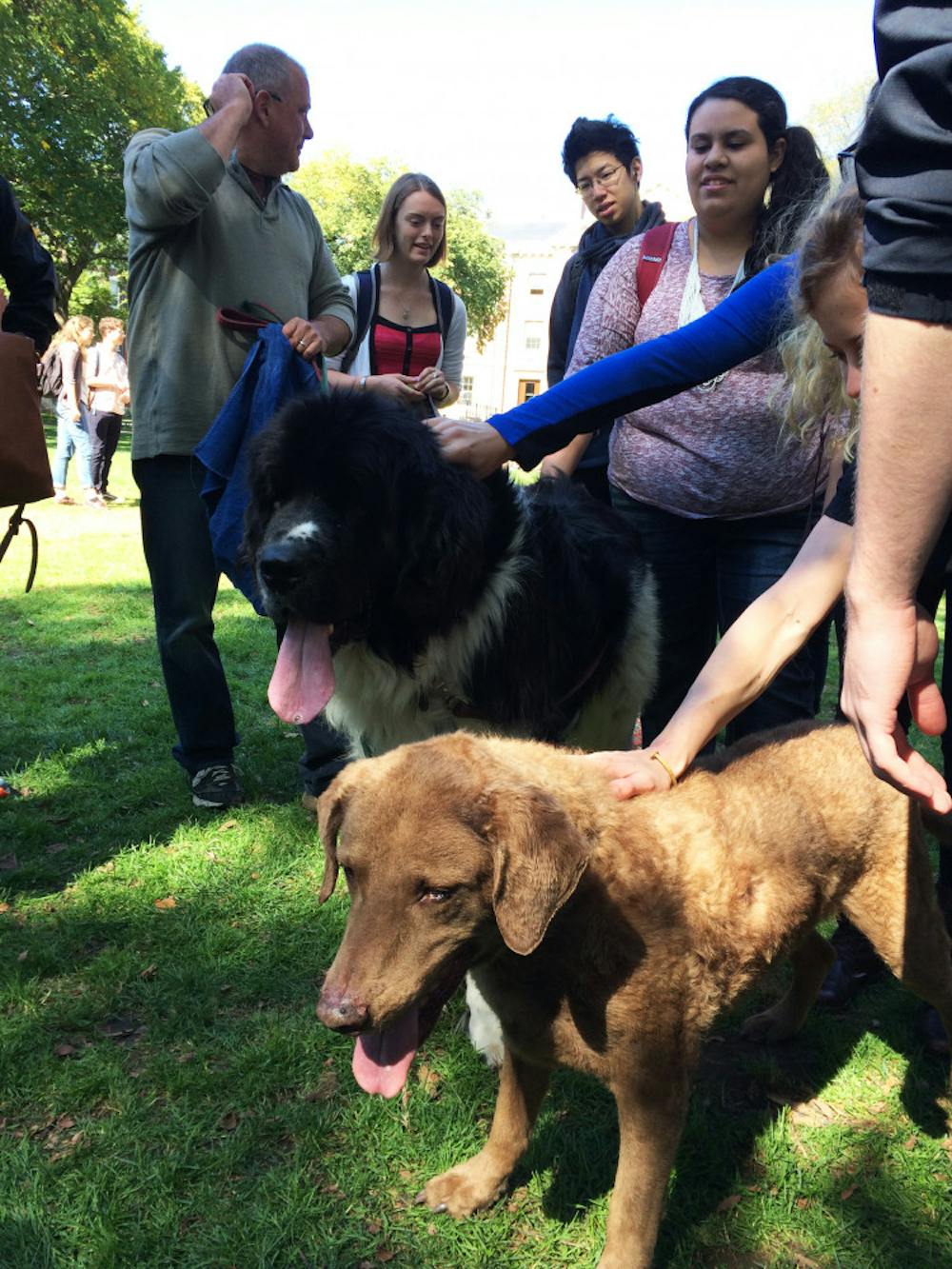Students seeking to relieve stress and participate in a more intimate version of Heavy Petting can now take advantage of a new program. The Animal Assisted Therapy Program, launched by Peter Herrera ’16 and Lena Bohman ’18, allows students to sign up for 10-minute slots to pet and play with trained therapy dogs.
The program kicked off Friday afternoon in the basement of the Stephen Robert ’62 Campus Center. Baxter, a small furry canine of unknown pedigree, is the program’s only current therapy dog and had the responsibility of entertaining the 12 students who attended the launch.
The students had to sign up online quickly to secure their spots in the program. They spent their 10 minutes scratching Baxter’s back, making small talk with Baxter’s handler, Bohman, and generally de-stressing.
The seeds for the program were planted last winter, when Herrera realized the dog he had always used as his emotional support animal was capable of doing therapeutic work for others. “I was like, ‘I can make this good for everyone,’” Herrera said.
Herrera spent the summer meeting with dog certification organizations and several administrators to make his idea a reality. Catherine Axe, director of Student and Employee Accessibility Services, reacted with enthusiasm and found a home for the program in Faunce. She has also advertised the program to students registered with SEAS via email.
The program stands out as “one of the many ways to holistically support students,” Axe said. “We thought this would be a more indoor option (than Heavy Petting), and you could get one-on-one time with the animal, which could be beneficial.”
The benefits of this solo time with animals has medical backing. Petting animals is proven to decrease symptoms of depression and anxiety and lower blood pressure, Herrera said. “It’s weird because most people know they feel better when there’s a dog around, but they’ve done tons of studies proving it,” he added.
Maria Martinez ’18, one of the 12 students who participated on Friday, echoed this sentiment after finishing her 10 minutes with Baxter. “You sort of get energy from a dog. I feel like dogs are always excited about life and they just sort of rub that off on you,” she said.
Martinez said she left the session excited about the number of Baxter kisses she had received and pleased at the program’s departure from Heavy Petting, where “you barely get to see the dogs because they’re usually running away from the students.”
But Simon Jones ’16, another attendee of Friday’s session, was slightly less enthused. “It’s a small dog, and I think it was a little afraid because I’m 6-foot-5,” he said.
Looking ahead, Herrera plans to have his greyhound Squid join the ranks of Brown’s therapy dogs in November. Herrera has no doubts that Squid will pass the exam to become certified, as he believes greyhounds have the perfect composition for therapy dogs. “They’re not aloof — they just sort of exist and will let you do whatever,” Herrera said.
Once Herrera adds Squid and expands to two dogs and two rooms, he hopes to make the program a daily fixture of Brown with a two-hour session every day. “We have 6,000 students, and it would be nice if every student had a chance,” he said.
Further down the road, Herrera aims to capitalize on the other animals that can be certified, including cats, guinea pigs, miniature horses, pigs and llamas. Though Herrera recognizes the logistical and administrative difficulties, he sees a future for pet therapy that features a plethora of different animals. “I just need to find out where the University draws the line between species,” he said.
Correction: A previous version of this article mistakenly referred to a therapy dog as a service dog. It also misquoted Axe as saying the program would be a "more popular indoor option" than Heavy Petting, rather than a "more indoor option." The Herald regrets the errors.





